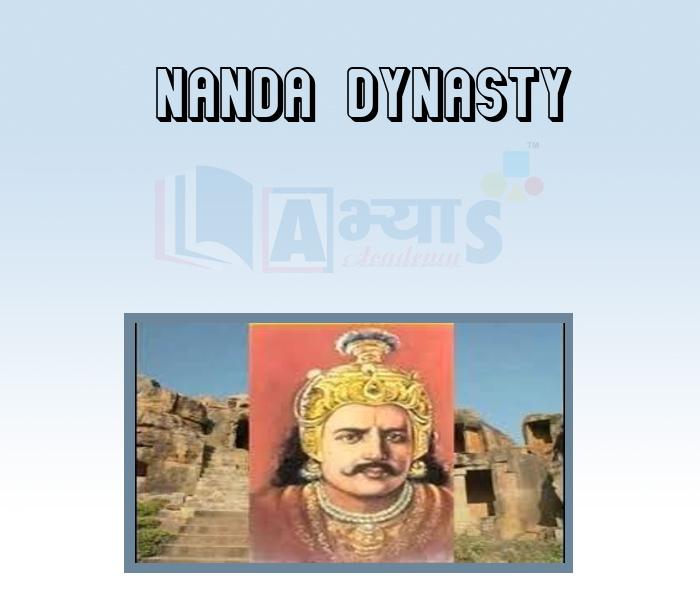Nanda Dynasty

Nanda Dynasty
Nanda Dynasty (344-322 BC)
(Preceded by Magadha Dynasty; Followed by Maurya Dynasty)
Bimbisara's dynastic lineage ended with the Nanda dynasty taking over the reigns of Magadha. The first king of Nanda dynasty was Mahapadma or Mahapamupati Nanda. He was succeeded by his eight sons, of whom the last was named Dhana-Nanda. Dhara-Nanda was overthrown by Chandragupta Maurya, the founder of a new and more illustrious dynasty.
The Nandas are sometimes described as the first empire builders in the recorded history of India. they inherited the large kingdom of Magadh and wished to extended it to yet more distant frontiers. To this purpose they built up a vast army consisting of 200,000 infantry, 20,00 cavalry, 2,00 war chariots and 3,00 war elephants (at the lowest estimates). However, the Nandas never had the opportunity to see their army up against Alexander, who invaded India at the time of Dhana Nanad, since Alexander had to confine his campaign to the plains of Punjab, for his forces, frightened by the prospect of facing a formidable foe, mutinied at the modern Beas River (Tributary of Indus River) refusing to march any further. Dhana - Nanda was overthrow by Chandragupta Maurya, the founder of a new and more illustrious dynasty.
In 326 BC, Alexander invaded ________ | |||
| Right Option : D | |||
| View Explanation | |||
________________ was the first king of Nanda Dynasty. | |||
| Right Option : C | |||
| View Explanation | |||
King of Nanda Dynasty Mahapadma's son name was ___________ | |||
| Right Option : C | |||
| View Explanation | |||
Students / Parents Reviews [10]
Being a parent, I saw my daughter improvement in her studies by seeing a good result in all day to day compititive exam TMO, NSO, IEO etc and as well as studies. I have got a fruitful result from my daughter.

Prisha Gupta
8thOne of the best institutes to develope a child interest in studies.Provides SST and English knowledge also unlike other institutes. Teachers are co operative and friendly online tests andPPT develope practical knowledge also.

Aman Kumar Shrivastava
10thIt was good as the experience because as we had come here we had been improved in a such envirnment created here.Extra is taught which is beneficial for future.

Eshan Arora
8thIt has a great methodology. Students here can get analysis to their test quickly.We can learn easily through PPTs and the testing methods are good. We know that where we have to practice

Barkha Arora
10thAbhyas is a complete education Institute. Here extreme care is taken by teacher with the help of regular exam. Extra classes also conducted by the institute, if the student is weak.

Om Umang
10thA marvelous experience with Abhyas. I am glad to share that my ward has achieved more than enough at the Ambala ABHYAS centre. Years have passed on and more and more he has gained. May the centre flourish and develop day by day by the grace of God.

Archit Segal
7thAbout Abhyas metholodology the teachers are very nice and hardworking toward students.The Centre Head Mrs Anu Sethi is also a brilliant teacher.Abhyas has taught me how to overcome problems and has always taken my doubts and suppoeted me.

Shreya Shrivastava
8thMy experience with Abhyas academy is very good. I did not think that my every subject coming here will be so strong. The main thing is that the online tests had made me learn here more things.

Hiya Gupta
8thIt was a good experience with Abhyas Academy. I even faced problems in starting but slowly and steadily overcomed. Especially reasoning classes helped me a lot.

Cheshta
10thMy experience was very good with Abhyas academy. I am studying here from 6th class and I am satisfied by its results in my life. I improved a lot here ahead of school syllabus.










